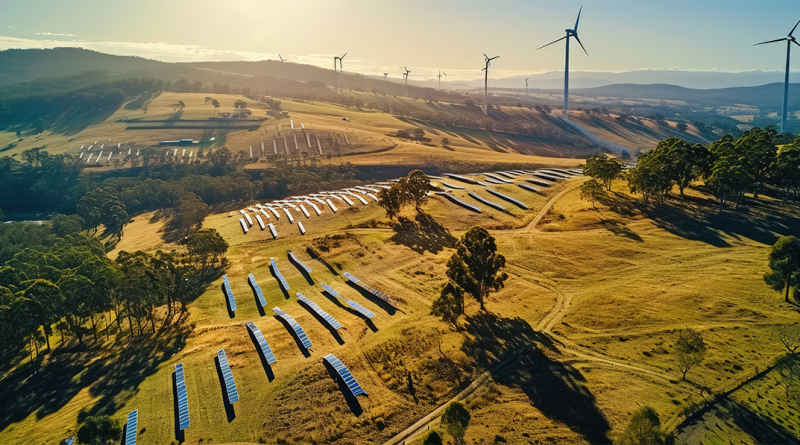Why Solar and Wind Power Are Australia’s Cheapest Energy Future
Australia is at a crucial turning point in its energy transition, as the country seeks to reduce its reliance on fossil fuels and meet its net-zero emissions target by 2050. Traditionally dependent on coal, Australia has faced criticism for its high per capita carbon emissions. However, the adoption of renewable energy is gaining momentum as the most viable solution for decarbonizing the energy sector.
Recent studies, such as the GenCost 2023-24 report from CSIRO, indicate that renewable energy, particularly solar and wind, is the most cost-effective path forward for Australia’s energy system. These renewable sources not only address environmental concerns but also offer significant economic benefits through reduced energy costs and enhanced competitiveness on the global stage.
Australia’s geography and climate make it particularly suited for renewable energy development. Transitioning to renewables presents challenges, including the need for improved energy storage and grid infrastructure to ensure a stable supply of power throughout the year.
Why Renewables Are the Cheapest Option for Australia
According to the GenCost 2023-24 report, solar and wind power remain the least expensive sources of electricity in Australia. The metric used to evaluate energy generation costs, known as the levelized cost of electricity (LCOE), consistently ranks solar photovoltaic (PV) and wind energy as the cheapest technologies.
LCOE accounts for the total lifetime costs of building and operating power plants, making it a reliable measure of long-term affordability. Even when considering additional costs for battery storage and transmission, which are necessary to manage the intermittent nature of renewable energy, solar and wind power continue to outperform traditional fossil fuel-based power generation in terms of cost.
While inflation and global supply chain issues have slowed the rate of cost declines, renewable energy remains the most economically viable solution for Australia’s future energy needs. This affordability is expected to drive further investment in renewable energy projects, reducing electricity prices for consumers and helping Australia meet its international climate commitments.
The Role of Battery Storage and Grid Integration
As renewable energy becomes more central to Australia’s energy mix, battery storage and grid integration are crucial to ensuring reliable power. Solar and wind are inherently variable energy sources, which means they cannot produce electricity around the clock. To mitigate this, batteries and other energy storage solutions play a key role in maintaining grid stability.
Australia has already begun investing in large-scale battery storage projects, which store surplus electricity generated during peak production periods. This stored energy can be used during times of high demand or when renewable generation is low. The relatively stable cost of battery storage, which has increased by just 2% in the past year, reflects its growing importance in the energy landscape.
The upgrades to Australia’s transmission infrastructure are essential for distributing renewable energy across the country. These upgrades are included in the total LCOE for renewable energy projects, yet solar and wind remain the most cost-effective power sources.
As Australia moves towards achieving 90% renewable energy by 2030, continued investment in both storage technologies and transmission networks will be necessary to ensure a reliable, low-carbon energy supply.
Economic and Environmental Benefits of Investing in Renewables
The economic benefits of transitioning to renewable energy extend far beyond the immediate savings in electricity costs. By investing in solar, wind, and storage technologies, Australia is not only reducing its carbon footprint but also positioning itself as a global leader in the green energy economy.
Australia’s vast deployment of rooftop solar systems has created thousands of jobs and driven down household electricity bills, while large-scale wind and solar farms contribute to the nation’s economic growth. These projects are also crucial in insulating Australia’s energy market from the volatility of global fossil fuel prices, which have fluctuated due to large geopolitical events.
As coal plants are phased out, emissions from the energy sector will decrease dramatically, helping Australia meet its climate goals and reduce air pollution. This pollution reduction is expected to yield public health benefits, cutting healthcare costs linked to diseases caused by poor air quality. With continued investment in technology and infrastructure, Australia is leading the way in securing a thriving, resilient economy built on clean energy.
Sources:
